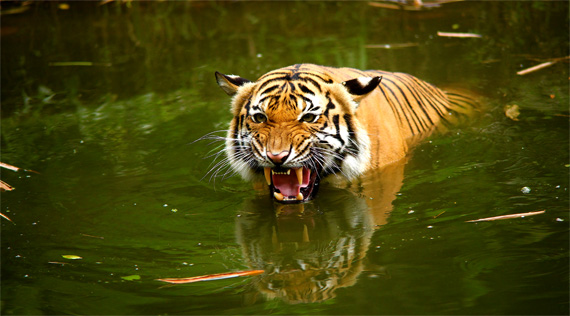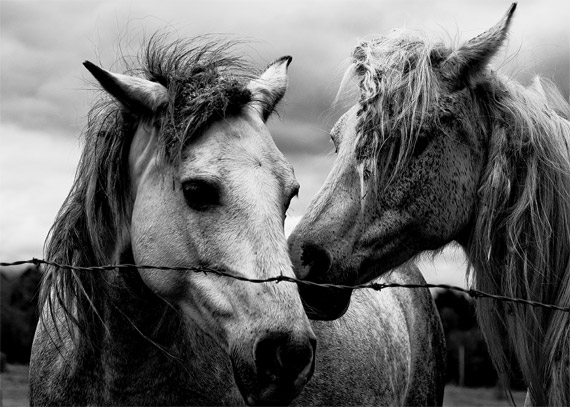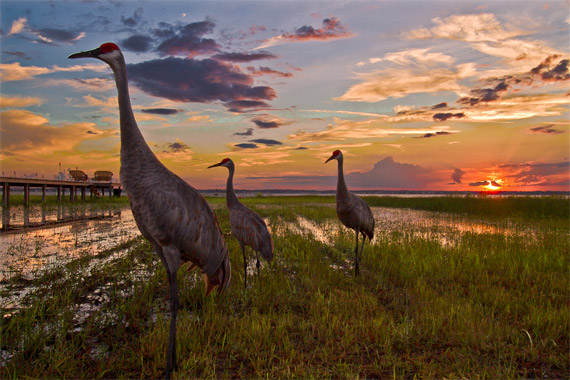Wildlife photography is both rewarding and frustrating, even for experienced photographers. While a great photo is something to treasure, the challenges of wildlife photography can leave beginners feeling a little lost.

photo captured by PictureSocial member ahmad reedzuan
“It was wonderful to be there, but this photo doesn’t really do it justice.” Does this sound familiar? Too often we have a great experience in nature, and even though we have our camera at the ready, we fail to get the shot. This is not because the camera lets us down; it is because in our rush to get a photo–any photo–we fall victim to a number of mistakes that can ruin a good wildlife photography opportunity.
Wildlife Photo Mistakes and Tips to Overcome
1. Fail to Get Close Enough to the Subject
This is probably the most obvious mistake you can make. You may see a bird in a tree, but your photo turns out to be all tree and no bird. In wildlife photography, the ‘less is more’ approach is often best. Ask yourself what is important for your photo, and eliminate everything else. In most cases, it’s best to get as close as possible to the subject and/or zoom in with your largest lens. This eliminates the distraction of the background so that the viewer’s attention is entirely on the subject itself.
2. Distracting Depth of Field
This is closely related to mistake #1. When you set your camera to automatic, you allow it to set your aperture and shutter speed settings for you. To get the best results, you need to make these decisions for yourself. If you take your photos on a small aperture setting, you increase the depth of field around the subject, allowing the background to become more of a distraction. You are better to set the widest aperture setting you can. This narrows the depth of field, concentrating the focus on the animal. As an added bonus, it will also allow a faster shutter speed, which helps to freeze a moving subject.

“The Pair” captured by PictureSocial member Derrick Smith
3. Get Too Close to the Subject
When the opportunity arises to get a good close-up, some people go a little too far. A good wildlife photo wants a little space around the subject, otherwise, your composition can look cramped, with the animal squashed into a space where it doesn’t quite fit.
In these situations, try zooming back just a little to allow a little head room around the animal. There should be at least a small amount of space above the head and on each side. If the animal is facing to one side, adjust your composition so that there is a little more space in front of the subject than behind it. That way the animal will be looking into the picture, not at the edge of the frame.
4. Bad Timing
Animals move, they blink, they turn their heads, they flap their wings. Sometimes it seems they are on a mission to foil your best attempts at a good photo.
In every wildlife encounter, there are a thousand opportunities to take a bad photo and maybe one or two opportunities to take a good photo. A nature photographer learns to be ready for that perfect moment.
This is a matter of patience and perseverance. You need to spend as much time as possible with your subject and take a lot of photos. Expect most of them to be rubbish, but take delight in the good ones because they are hard to come by. In particular, watch the animal’s movements and behavior. The trick is to try to catch a moment that expresses something unique to set your photo apart from millions of others. You won’t get that perfect shot every time, but when you do it is a moment to treasure.
5. Poor Lighting
We all love to get out and about on sunny days, but these are not necessarily the best conditions for a good photo. Bright sunshine produces shadow where you may not want them, in particular across your subject’s facet. In the middle of the day when the light shines from above, you can find that most of the face and all of the underside of the subject is lost in dark shadow.
The solution? If it is a sunny day, take your photos early in the morning or late in the afternoon, when the sun is at a lower angle. You will also find lower contrast and warmer color in the light, adding character to the whole photo.

“Sandhill Sunset” captured by PictureSocial member Debra Vanderlaan
In many cases, it’s best to take your photos on a cloudy day, when the light is even and the contrast is low. This light can work best for some subjects by completely eliminating glare and heavy shadow.
About the Author:
Andrew Goodall writes for http://www.naturesimage.com.au and is a nature photographer based in Australia. He manages a gallery in Montville full of landscape photography from throughout Australia.
Go to full article: Common Mistakes in Wildlife and Nature Photography
What are your thoughts on this article? Join the discussion on Facebook
PictureCorrect subscribers can also learn more today with our #1 bestseller: The Photography Tutorial eBook
The post Common Mistakes in Wildlife and Nature Photography appeared first on PictureCorrect.
from PictureCorrect http://bit.ly/2UEZrRu
via IFTTT






0 kommenttia:
Lähetä kommentti